
All categories
Featured selections
Trade Assurance
Buyer Central
Help Center
Get the app
Become a supplier

(63 products available)
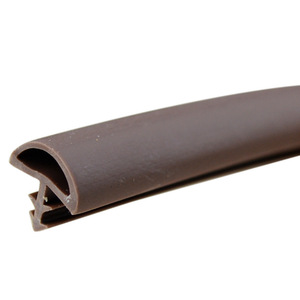

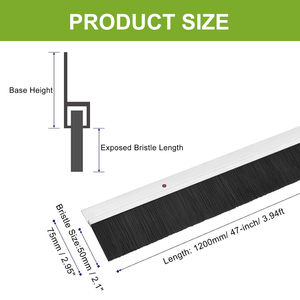
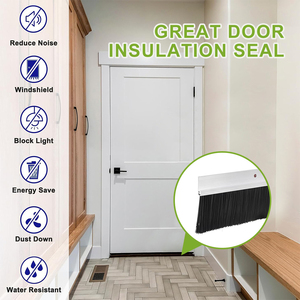
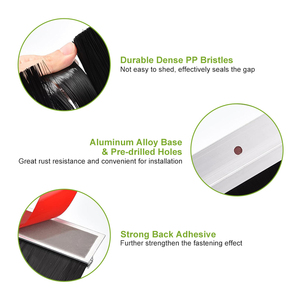










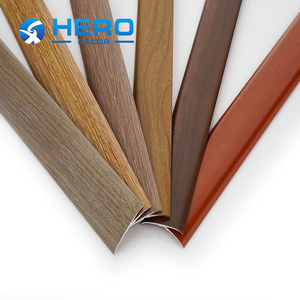




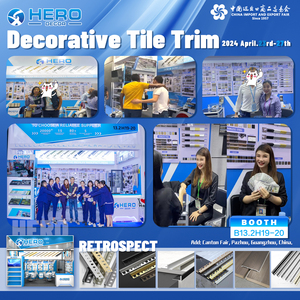



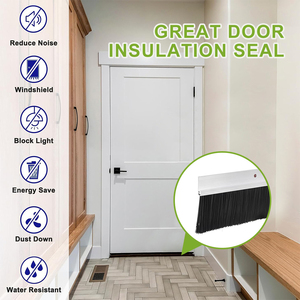

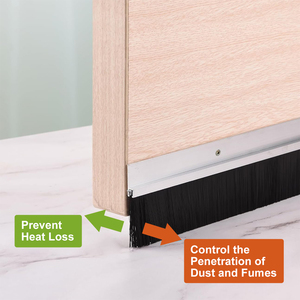





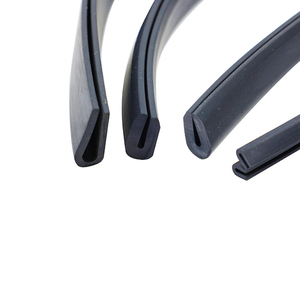
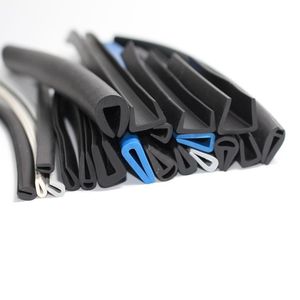

Rubber Sealing Strip
A rubber sealing strip is widely recognized for its flexibility and resilience. Usually, these properties make it an ideal selection for plinth applications. Further, rubber strips effectively resist water, dust, and noise, giving an airtight and watertight seal. Additional to their sealing capabilities, these strips have a long lifespan, particularly in situations where you expect a lot of movement or expansion and contraction due to temperature changes. Ultimately, this is why plinth sealing strips are predominantly used in residential and commercial flooring installations.
Foam Sealing Strip
This is a sealing strip that is usually made of compressible materials such as polyurethane or polyethylene foam. Most importantly, these strips provide excellent insulation, making them suitable for use in areas where thermal or acoustic insulation is crucial. Usually, a foam sealing strip is easy to cut and adjust. This makes it a convenient choice for projects requiring a quick and straightforward installation. While foam strips are less durable than rubber, they are still very effective in low-traffic areas or where sealing against air infiltration is needed.
Silicone Sealing Strip
Usually, these silicone sealing strips are highly regarded for their durability and resistance to harsh environmental elements. Ideally, they come in UV and temperature variants and are mostly used in outdoor applications or areas with exposure to sunlight. Ideally, their flexibility allows them to conform closely to surfaces, thus providing a tight seal against water and air leaks. Often, silicone sealing strips are used in windows and doors, and their long-lasting nature makes them a more premium alternative to rubber or foam.
Vinyl Sealing Strip
Usually, vinyl sealing strips offer a cost-effective solution for sealing needs. In add-on, they provide decent resistance to moisture and are often used in low to moderate-traffic areas. As opposed to other materials, vinyl is less flexible, which makes it most ideal for applications where a rigid seal is preferable. Common uses include cabinetry, countertops, and flooring edges. Often, vinyl strips are chosen for their affordability and ease of installation.
Below are some of the current trends when it comes to the plinth sealing strip market:
Increased Demand for Energy Efficiency
There is a growing emphasis on energy-efficient building solutions that improve indoor air quality and reduce energy consumption. Usually, sealing strips are critical to achieving this goal by minimizing air leaks, and thus, their demand increases with the construction and renovation of energy-efficient homes.
Innovations in Materials and Technology
The advancements in sealing strip materials have had a direct impact on their performance and durability. These materials have been developed to offer better resistance to UV rays, chemicals, and extreme temperatures. This, in turn, makes sealing strips, especially silicone variants, to be more applicable in many outdoor environments.
Rise in DIY Projects
Further changing the landscape of the sealing strip market is the rise of DIY projects. Currently, consumers are more inclined to handle home improvement projects. Due to this, there is an increased demand for user-friendly sealing products. Generally, these products feature simple installation methods that require no professional assistance.
Sustainability Concerns
Usually, sustainability has become a significant consideration in the construction as well as renovation sectors. Therefore, manufacturers are increasingly using eco-friendly materials to produce sealing strips, like recycled rubber and natural compounds.
Plinth Sealing Strip Applications in Industrial Settings
Beyond residential and commercial use, plinth sealing strips have applications in industrial and manufacturing facilities. In these environments, dust and moisture infiltration can impact operations. Therefore, the sealing strips are vital in protecting machinery as well as maintaining a safe workspace.
Customization and Personalization
Customization possibilities for sealing strips, such as cutting to size, colors, and profile types, are increasingly becoming popular. Thus, customers can now select sealing solutions for their unique preferences and requirements.
Routine Inspection
Regularly check the sealing strip for visible signs of wear, such as cracks, fading, or brittleness. Also, make it a point to inspect for any damage on furniture and any potential hazards during general maintenance.
Cleaning
Clean the sealing strip at least once a month or more often if the environment is particularly harsh. Ideally, use mild soap, water, and a soft brush to remove dirt and debris, then use clean, soapy water to wipe off the soap residue, and finally, let it air dry.
Lubrication
If the sealing strip is made from materials such as rubber or vinyl, consider applying a suitable protectant or UV lubricant once in a while to prevent cracking and fading. When doing this, avoid using oil-based products, as these will damage the sealing strip.
Replacement
A plinth sealing strip can last from five to seven years, depending on the level of maintenance, the type of materials in use, and the environmental conditions. Additionally, as soon as any damage is beyond the scope of simple repairs or the sealing strip has worn out, replace it immediately to maintain effective sealing.
Preparation of the Surface
To achieve proper adhesion, make sure the surface is clean and free of debris. The dust, dirt, and old adhesive remnants will reduce the sealing strip's effectiveness. Therefore, clean the surface where the sealing strip will be attached.
Application of Sealant
This stage will highly depend on the surface condition and the sealing strip type. Ideally, a pre-sealed foam strip may not require additional sealant, while a rubber or vinyl strip may need a line of caulk or sealant applied along its base.
Positioning the Strip
Once the surface is ready, position the plinth sealing strip along the plinth's base. Ensure it is properly aligned before pressing it into place, as this will ensure an even distribution of the sealing material that helps create the seal.
Securing the Strips
Press down firmly on the strip to make sure it adheres to the surface. If needed, use a roller or a block of wood to ensure an airtight and secure installation. Lastly, if applying a sealing strip on a larger area, consider using a neat and continuous seam so that the strip can function effectively in its intended application.
Material Durability
Manufacturing material has a critical impact on the longevity of a sealing strip. For this reason, it is advised to use high-quality rubber, silicone, or vinyl that can withstand wear and tear, particularly in high-traffic environments. The material selected should also be resistant to temperature variations, as these factors can eventually cause a degradation of the material.
Seal Effectiveness
The main purpose of a sealing strip is to effectively prevent air, water, and dust infiltration. Therefore, a quality sealing strip needs to fit snugly against the plinth and maintain a tight seal over time. Performing a leak test in order to check for air or water infiltration can help determine seal effectiveness.
UV and Chemical Resistance
If the sealing strip is for outdoor use, it should be manufactured with UV-resistant materials. In addition, if it is exposed to chemicals or moisture, the sealing strip should be made with materials that can resist degradation.
Compression Set Resistance
A quality sealing strip should be able to maintain its original shape and sealing capability even after prolonged compression. Therefore, a compression set test is usually performed to determine whether the material can recover after being compressed for a long period.
Installation Hazards
Practically, sharp tools are normally needed to install sealing strips, and these tools can potentially cause injury if not handled properly. Therefore, when handling such tools, one should wear protective tools like gloves so as not to hurt oneself even when the tools are sharp.
Indoor Air Quality
These sealing strips are normally manufactured with volatile organic compounds (VOCs). Thus, it is important to use low-VOC products to avoid breathing problems, especially in poorly ventilated areas. Further, ensure there is proper ventilation when installing these sealing strips or use respiratory protective equipment.
Slip Hazards
Normally, sealing strips are fixed along floors' edges, and if they are not fixed correctly, they can become a slip hazard. In addition, ensure that the strip is properly secured so that it does not pose any risk of tripping or slipping.
Fire Safety
Lastly, manufacturers make some sealing strip materials with flammable substances. Therefore, it is prudent to select materials with fire-retardant properties, especially in places where there are high fire risks. In addition, store these sealing strips in a cool area away from direct sunlight in order to minimize their exposure to high temperatures.
The factors that should be considered when selecting a plinth sealing strip include the material of the sealing strip, the position where it will be installed, durability, and flexibility, as well as the kind of environmental exposure the sealing strip will undergo.
Manufacturers usually use a plinth sealing strip to provide a connection between the plinth and the furniture for aesthetics and functionality. Thus, it helps to create a smooth transition between the plinth and flooring, as well as reduces dust, moisture, and pests, which protects the furniture. In addition, manufacturers commonly apply these sealing strips in homes, offices, and commercial installations.
A plinth sealing strip's lifespan highly depends on the materials used and the conditions in which it is placed. Ideally, a plinth sealing strip should last between 5 and 10 years under normal circumstances. Nevertheless, exposure to extreme temperature, moisture, and high sunlight can reduce its lifespan.
Yes, a plinth sealing strip can be. In fact, replacement is easy. Usually, the process involves removing the old strip, cleaning the area, and then installing a new one. Further, regular inspections help identify when replacement is due, and this helps maintain the effectiveness of the seal.
Maintenance usually involves regularly cleaning the strip to remove debris, examining it for wear and tear, and then checking for opportunities to seal any gaps. Further, in cases where sealing strips show signs of deterioration or donning others' sealing strips, replacement is an excellent maintenance practice.